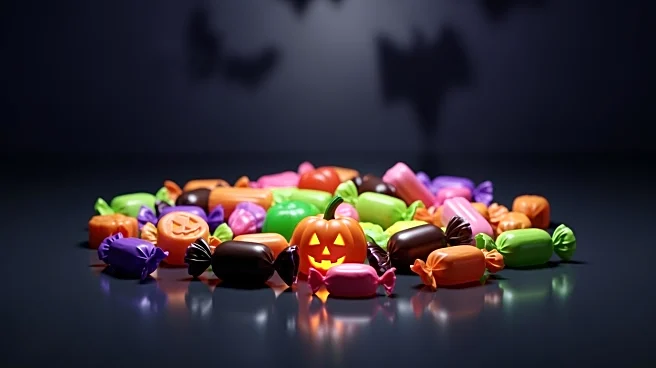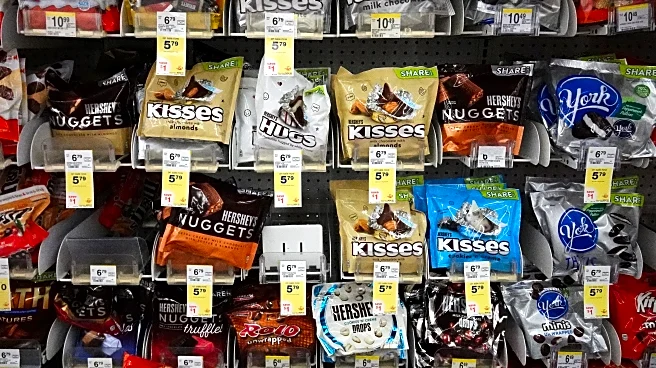What's Happening?
The National Confectioners Association (NCA) has released a survey indicating that non-chocolate candy sales, particularly gummy and chewy varieties, have become the second-largest confectionery category
in the U.S., accounting for $12.9 billion in sales in 2024. This represents a third of all U.S. confectionery sales. The survey highlights a shift in consumer preferences towards sour, spicy, and 'mystery' flavors, alongside traditional fruity flavors. Companies like Ferrara and Mars, Inc. are innovating with texture freeze-dried products, such as Ferrara's freeze-dried Lemonhead, Spree, and Sweetarts, and Mars' Skittles Pop'd, which offers a crispy texture. The NCA survey also notes that Gen Z's spending on candy increased by 47% year over year, with Gen X currently leading in candy unit sales, although millennials are expected to overtake them soon.
Why It's Important?
The growth in non-chocolate candy sales reflects changing consumer tastes and the confectionery industry's ability to innovate and adapt. This trend is significant for manufacturers and retailers as it influences product development and marketing strategies. The increased spending by Gen Z and millennials suggests a shift in purchasing power and preferences, which could drive further innovation in flavors and textures. The confectionery industry stands to benefit from these changes, potentially increasing market share and profitability. However, traditional chocolate products may face challenges in maintaining their market position, prompting companies to diversify their offerings.
What's Next?
As consumer preferences continue to evolve, confectionery companies are likely to invest more in research and development to create novel products that cater to emerging tastes. The focus may shift towards more interactive and experiential candy products, as seen with Bazooka Brands' Juicy Drop Gummy Mystery Cube. Retailers might also adjust their strategies to accommodate the growing demand for non-chocolate candies, particularly in online sales channels favored by younger generations. The upcoming Halloween season could further highlight these trends, with candy being a major purchase item for consumers.
Beyond the Headlines
The shift towards non-chocolate candies could have broader implications for health and nutrition discussions, as these products often contain high sugar levels. The confectionery industry may face pressure to address these concerns by offering healthier alternatives or transparent labeling. Additionally, the focus on innovative textures and flavors might influence other food sectors, encouraging cross-industry collaborations and new product lines.












